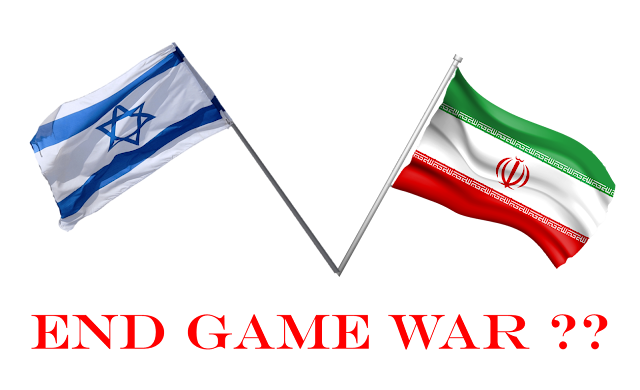Iran's Supreme Leader Ali
Khamenei, the ruthless architect of the Islamic Republic's power for 35 years,
faces his most perilous moment yet, backed into a corner with dwindling options
after devastating Israeli strikes shattered his deterrent strategy.
The 84-year-old ayatollah, long
defined by pragmatic caution and an aversion to direct confrontation, now
presides over a weakened Iran. His carefully constructed "axis of
resistance" militias lie battered, key air defences are proven
ineffective, and Israeli assassinations have decimated his top military and
nuclear commanders. Khamenei's defiant vow that Israel "won’t last
long" rings hollow as his regime struggles to mount effective retaliation.
A Lifelong Strategy Unravels
Khamenei's career has been a masterclass in survival and consolidation:
- Radical Roots: Born in Mashhad to a
minor cleric, he emerged in the 1960s as a young radical, deeply
influenced by Ayatollah Ruhollah Khomeini and anti-Western ideologies. He
translated works by Egyptian extremist Sayyid Qutb, absorbed
Marxist-Islamist fusion theories, and embraced concepts of "detoxification."
- Revolution & Rise: Imprisoned
repeatedly by the Shah's security services, he played a key role in the
1979 revolution. Surviving an assassination attempt that cost him an arm,
he rose swiftly, becoming president in 1981.
- Supreme Consolidation: Upon Khomeini's
death in 1989, Khamenei ascended to the powerful role of Supreme Leader
after constitutional changes lowered clerical requirements. He
meticulously centralized power, forging an unbreakable alliance with the
Islamic Revolutionary Guard Corps (IRGC) while cultivating other
loyalists. Dissidents, poets, and overseas critics were ruthlessly
suppressed.
- Proxy Power & Pragmatism: His
signature strategy was reliance on proxies – Hezbollah, Hamas, the
Houthis, and Iraqi/Syrian militias – to project Iranian power, deter
adversaries (especially Israel, the "Little Satan"), and avoid
direct war. He pragmatically allowed limited reform under President
Khatami (even tentative outreach to the US post-9/11) while fiercely
protecting the regime's core ideology and power. He notably upheld
Khomeini's prohibition on nuclear weapons.
- Nuclear Gambit: Sceptical but not
obstructive, he allowed the 2015 nuclear deal to proceed, while analysts
debate his true stance on the IRGC hardliners pushing for a bomb.
The Crumbling Deterrent
Recent Israeli actions have systematically dismantled Khamenei's decades-long
strategy:
- Proxy Network Shattered: The
assassination of Hezbollah chief Hassan Nasrallah (a close Khamenei
confidant for decades) in Beirut was a deep personal blow. The broader
"axis of resistance," heavily invested in by Tehran, has been
severely degraded by sustained Israeli operations across multiple fronts.
The fall of Assad in Syria last December severed another key alliance.
- Military Decapitation: Operation Rising
Lion eliminated senior IRGC commanders and critical figures within Iran's
nuclear program, striking at the heart of Khamenei's security and
strategic apparatus.
- Infrastructure Devastation: Strikes
targeted nuclear sites like Natanz (confirmed hit) and critically damaged
ballistic missile storage and launch facilities, crippling Iran's ability
to launch large-scale salvos as planned.
- Air Defences Exposed: Despite
retaliatory missile and drone barrages, Iran's air defences proved largely
ineffective against Israeli precision strikes deep within its territory.
The inability to protect its own critical sites is a stark vulnerability.
- Failed Retaliation: Iran's response –
approximately 200 ballistic missiles launched at Israel – was a fraction
of the 1,000-missile barrage IRGC sources claim was originally planned,
largely thwarted by pre-emptive Israeli strikes on launch capabilities.
While causing casualties, it inflicted limited strategic damage against
Israel's robust multi-layered defences.
The Bleak Horizon
Khamenei now confronts a landscape of unpalatable choices:
- Escalation Risk: Ordering larger, more
direct attacks risks overwhelming Israeli defences but invites
catastrophic retaliation against Iran's already damaged infrastructure and
potentially its vulnerable leadership directly. His life's work has been
to avoid this scenario.
- Accepting Weakness: Scaling back
responses or relying solely on asymmetric proxy attacks (now demonstrably
weakened) signals vulnerability, potentially emboldening Israel further
and undermining regime credibility domestically and among remaining
allies.
- Domestic Peril: Decades of repression
targeting women, minorities, and dissenters, coupled with a failing
economy, have fuelled widespread disillusionment. The spectacle of Israeli
strikes hitting Iranian soil with impunity and the regime's inability to
protect its own commanders or mount a decisive response further erodes
legitimacy. His cultivated image of modest asceticism offers diminishing
returns against this backdrop.
- Succession Looming: Physically ailing,
Khamenei's endgame coincides with intense speculation over his successor.
This internal power struggle occurs amidst unprecedented external
pressure, creating dangerous instability.
Analysts like Michael
Shoebridge (Strategic Analysis Australia) observe Iran is already struggling,
its retaliatory capacity significantly degraded compared to Israel's sustained
offensive capabilities. Professor Stephan Fruehling (ANU) suggests this could
settle into a "low level of war," with Israel continuing precise
strikes potentially aimed at regime change.
Khamenei, the pragmatic
survivor, finds the brutal balancing act that defined his rule nearing an
unsustainable climax. The gates of hell he once vowed to open against enemies
now seem perilously close to consuming the revolution he dedicated his life to
defending. With his proxy shield broken, his military command decimated, and
his nuclear ambitions under direct assault, the Supreme Leader who spent a
lifetime avoiding corners has few viable moves left. The end of his long,
ruthless reign may be defined by the very direct confrontation he worked so
assiduously to prevent.


.webp)





.webp)


.webp)


0 Comments